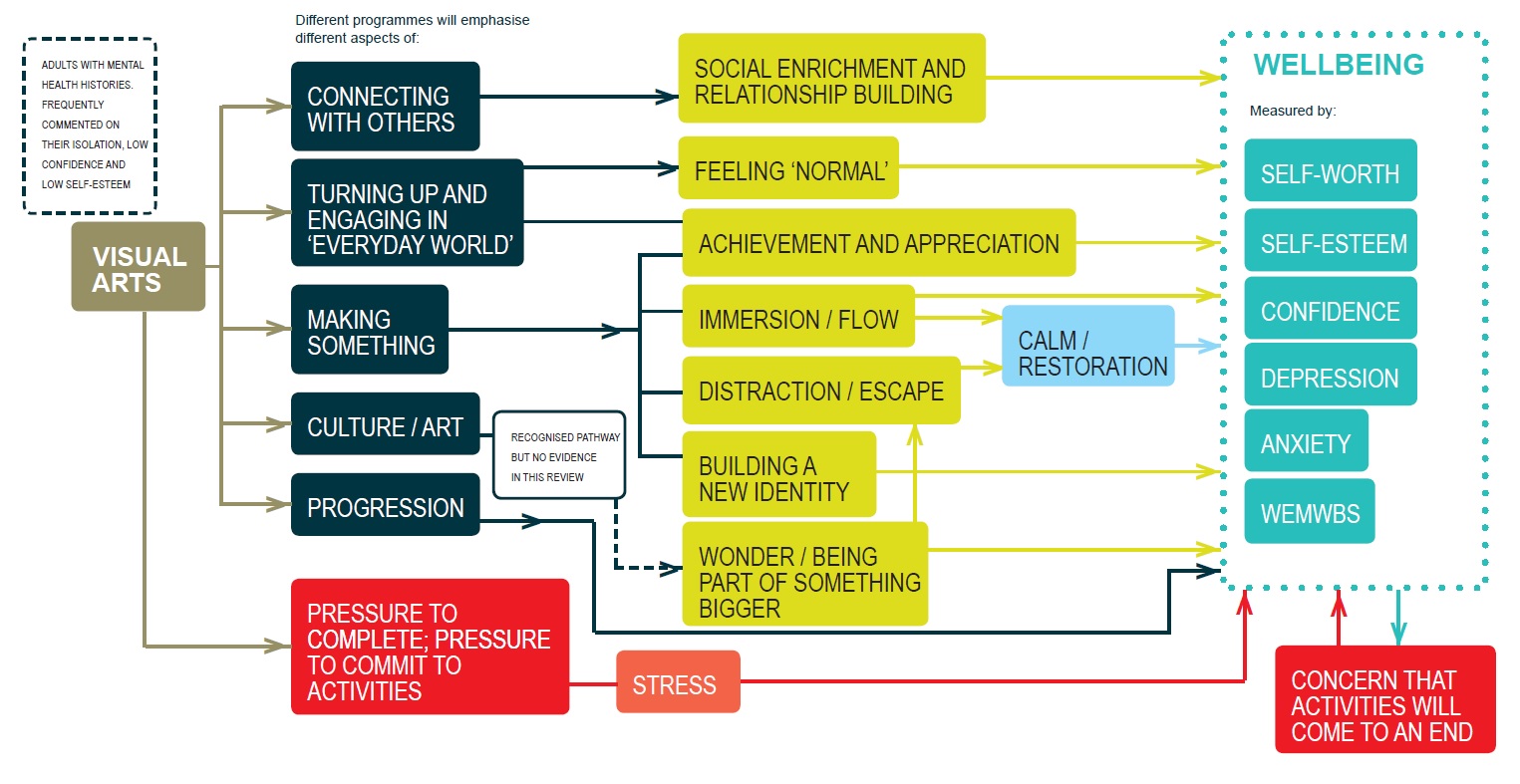Visual arts, mental health and wellbeing: evidence review
Today we launch our first evidence review of 2018: looking at visual art impacts on the wellbeing of adults with mental health issues. Here, the report authors* – led by Alan Tomlinson of the University of Brighton – explore the key findings and implications for policy and practice.
The importance of the visual arts in contributing to the wellbeing of adults with mental health conditions has been little documented beyond some insightful and influential interventions and exploratory studies.
Initiatives such as Arts on Prescription projects have, in the UK provided examples of the positive effects that engagement in artistic and creative activity can have, and some of these have been documented in small-scale studies of interventions.
This review looks at the subjective, or self-reported, wellbeing outcomes of visual arts projects aimed at adults who are experiencing, or have experienced, diagnosed mental health conditions.
The visual arts practices featured in the studies included forms of painting or drawing, art appreciation with selected art forms, artmaking culminating in an exhibition, and more general creative and craft activities that included visual artefacts such as ceramics or sculpture.
Key findings
Overall, the evidence available in this review shows that engaging in the visual arts for adults with mental health conditions can:
- reduce reported levels of depression and anxiety
- increase self-respect, self-worth and self-esteem
- encourage and stimulate re-engagement with the wider, everyday social world
- support in participants a potential re-negotiation of identity through practice-based forms of making or doing.

Of particular interest for practitioners in the field, the review confirms the most effective ‘working ways to wellbeing’. Processes like ensuring provision of secure safe-space and havens for interventions; recognising the value of non-stigmatising settings; supporting and sustaining collaborative facilitation of programmes and sessions.
Perhaps surprisingly, some negative dimensions of engagement with the visual arts were also identified, including stress and pressure felt to complete activities or commit to artmaking, and the very real fear that the end of an intervention would mean the return to a world of anxiety, decreasing confidence and social isolation.
The review shows that for adults starting visual arts activities or programmes, the subjective wellbeing outcomes are, for the majority of participants, positive. This applies to men and women alike across the studies.
Policy implications
The review also found that the most effective work in the visual arts field continues to lack the necessary resources and infrastructure that would ensure sustainable practices and interventions. There is a role here for policies that promote more adequately resourced, properly sustained, and rigorously evaluated partnerships of mental health professionals, artists and researchers.
This would facilitate a better understanding of the long-term benefits and wellbeing outcomes for those for whom innovative forms of visual art interventions have proven influential and potentially life-enhancing. Partnership funding across the governmental, private and voluntary sectors should be secured to support more extensive research, focusing in particular upon the long-term benefits of interventions and the sustainability of particular interventions and outcomes.
Training for wellbeing evaluation that captures the outcomes of the interventions and disseminates the findings across the interconnected political, practitioner, professional and research spheres would be invaluable. Both academic and non-academic dissemination would be essential in order to achieve the most effective research, policy and practice-based outcomes.
*Prof Tomlinson collaborated with, and had input from Professor Louise Mansfield, Prof.Tess Kay, Prof. Norma Daykin, Prof. Paul Dolan, StefanoTestoni, Dr. Catherine Meads, Dr. Alistair John, Prof. Guy Julier, Prof. Alan Tomlinson, Dr. Annette Payne, Lily Grigsby-Duffy, Jack Lane, Prof. Christina Victor.
